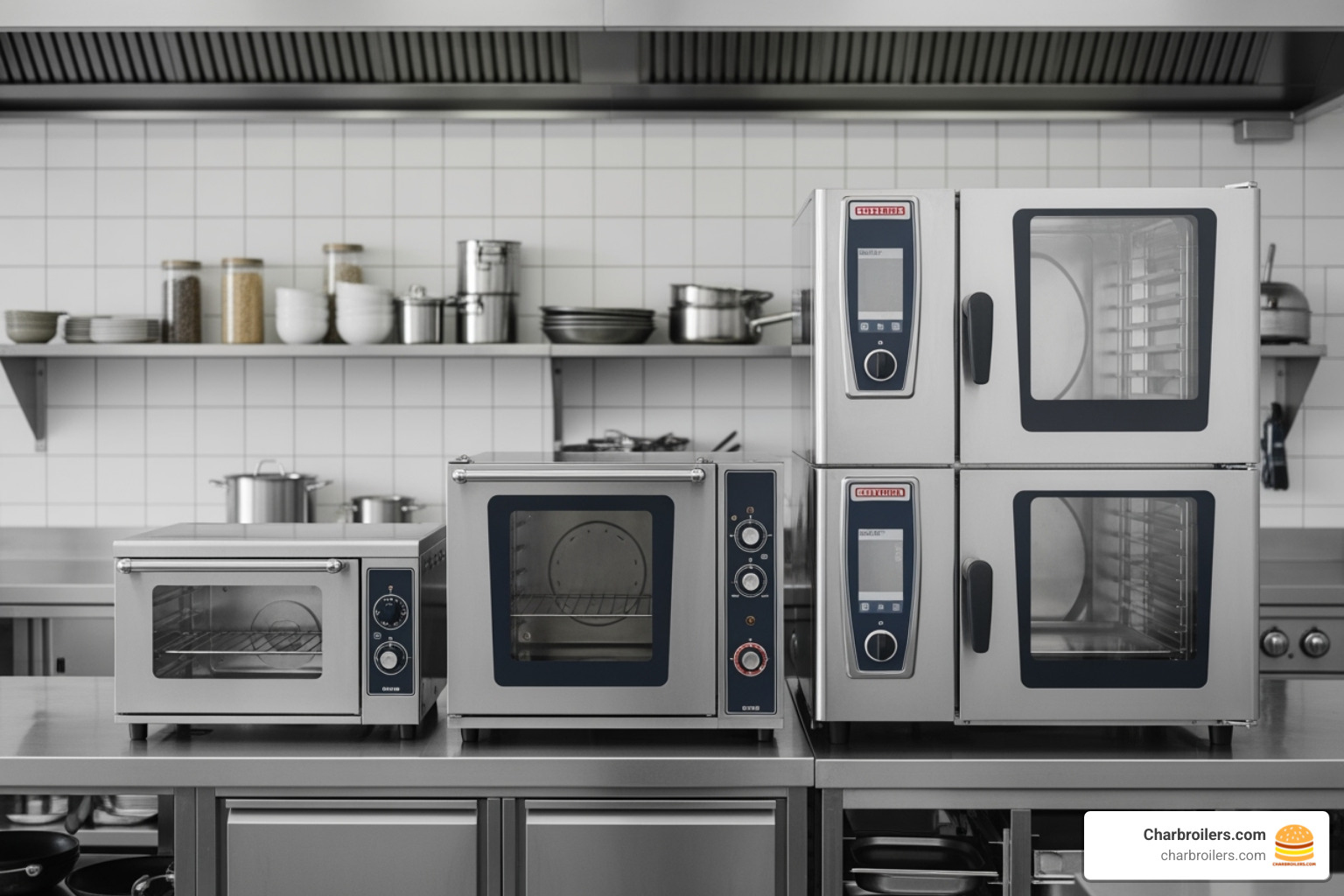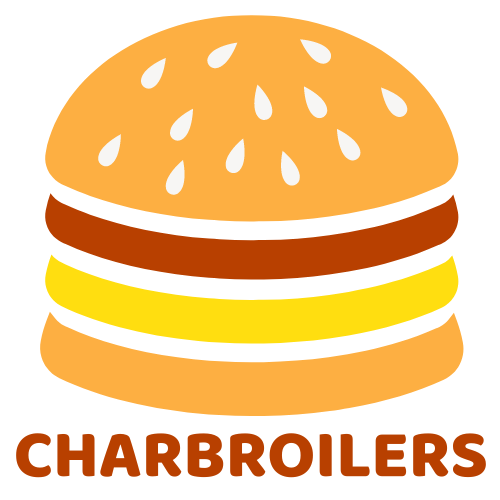
Budgeting for Bake-Offs: How Much Does a Commercial Convection Oven Set You Back?
Share
A Quick Look at Convection Oven Pricing
How much does a commercial convection oven cost - this question keeps many restaurant owners up at night as they plan their kitchen investments. The answer depends on several key factors, but here's what you can expect:
If you're new to the concept, here's a quick primer on what a convection oven is and how it differs from conventional ovens.
Commercial Convection Oven Price Ranges:
- Countertop Models: $300 - $2,500
- Single Deck Full-Size: $2,300 - $10,000
- Double Deck Models: $7,500 - $18,000+
- Premium/Combi Units: $15,000 - $26,000+
Whether you're running a food truck or managing a high-volume bakery, convection ovens deliver the even cooking and faster bake times that keep customers happy and your kitchen efficient. The wide price range reflects differences in size, fuel type, build quality, and advanced features like digital controls or steam injection.
From budget-friendly countertop units perfect for cafes to heavy-duty double-deck powerhouses that can handle a bakery's morning rush, there's a convection oven for every kitchen and budget. The key is understanding which features matter most for your specific operation.
I'm Sean Kearney from Charbroilers.com, and with over a decade in the restaurant equipment industry, I've helped countless owners steer the question of how much does a commercial convection oven cost while finding the perfect balance between features and budget. Let me walk you through everything you need to know to make the smartest investment for your kitchen.
How much does a commercial convection oven cost terms simplified:
- commercial convection ovens
- ventless commercial convection oven
- full size commercial countertop convection oven
Decoding the Price Tag: 5 Key Factors Influencing Oven Cost
When restaurant owners ask me how much does a commercial convection oven cost, I always tell them it's like asking how much a car costs. You could spend $300 on a basic countertop unit or $20,000+ on a premium double-deck powerhouse. The difference comes down to five key factors that can make or break your budget.
Let me walk you through what really drives these prices, so you can make the smartest choice for your kitchen.
Size and Capacity
The biggest factor in your oven's price tag? How much food it can cook at once. It's simple math – more capacity means more materials, bigger heating elements, and a higher price.
Half-size versus full-size ovens represent your first major decision point. Half-size units fit perfectly in smaller operations like cafes or food trucks, typically running $300 to $2,500. Full-size ovens become the workhorses of busy restaurant kitchens, with prices jumping to $2,300 and beyond.
Bakery depth adds another layer to consider. These deeper ovens give your food more breathing room and create better air circulation – crucial for perfect pastries and bread. That extra depth translates to extra dollars, but serious bakers swear by the results.
Think about maximizing your vertical space too. Double-deck configurations essentially give you two ovens in one footprint. While the upfront cost doubles, you're getting twice the productivity from the same square footage. For tight kitchens, that math works beautifully.
For help choosing the right size for your space, check out our guide on Maximize Your Space: Understanding Full Size Commercial Countertop Convection Ovens.
Fuel Type

Gas versus electric isn't just about cooking preference – it's about your wallet, both now and later. Electric ovens typically cost slightly more upfront, but the real difference shows up in your monthly utility bills and installation costs.
BTU versus kW ratings tell you how much power you're working with. Gas ovens measure heat in BTUs (British Thermal Units), while electric units use kilowatts. Gas ovens often heat up faster and recover temperature quicker when you open the door – a real advantage during busy dinner rushes.
Upfront versus operating costs create an interesting puzzle. While electric ovens might cost more initially, gas requires running new lines if you don't already have them. Your local utility rates will determine which fuel type saves money long-term. In many areas, gas runs cheaper than electricity, but that's not universal. Looking for ENERGY STAR certified models can also lead to significant savings on your utility bills.
Installation complexity matters too. Electric ovens need specific voltage and phase requirements – sometimes requiring expensive electrical upgrades. Gas ovens need proper ventilation and gas line connections, which add to your setup costs.
If you're leaning toward electric, our guide on Power Up Your Kitchen: The Best Commercial Electric Ranges with Convection Ovens can help you steer the options.
Build Quality
Here's where you really get what you pay for. Economy versus premium models might look similar from across the kitchen, but the differences become obvious after a few months of heavy use.
Stainless steel construction varies dramatically between price points. Budget ovens use thinner gauge steel that can dent, warp, or show wear faster. Premium models invest in heavier gauge stainless steel that maintains its appearance and structural integrity through years of commercial abuse.
Durability extends beyond just the exterior. Higher-end ovens feature better insulation, more precise temperature controls, and components designed for constant use. A budget oven might work fine for light use, but put it through a busy restaurant's daily grind, and you'll likely face more repairs and shorter lifespan.
Brand reputation matters because established manufacturers have proven track records. They offer better customer support, readily available replacement parts, and warranties that actually mean something when equipment breaks down at the worst possible moment.
Advanced Features
Modern convection ovens can do far more than just bake cookies. Digital controls replace old-fashioned analog dials with precise temperature settings and timer functions. This isn't just about looking fancy – digital controls deliver consistent results that analog systems simply can't match.
Programmability takes convenience to the next level. Instead of training every cook to remember exact time and temperature combinations for different menu items, you can program recipes directly into the oven. Touch a button, and the oven handles the rest.
Steam injection capabilities transform a standard convection oven into a versatile baking powerhouse. Professional bakeries rely on steam for creating perfect crusts on artisan breads and maintaining moisture in delicate pastries. This feature typically adds $500 to $2,000 to the base price, but it's essential for serious bread programs.
Advanced models might include humidity control, multi-stage cooking programs, or even smartphone connectivity for remote monitoring. Each feature adds cost, but they can also add significant value to your operation.
For a deeper dive into what's available, explore our Commercial convection ovens guide.
New vs. Used Condition
Certified used savings can cut your equipment costs by 30% to 70%, making high-end ovens accessible to smaller operations. Many used ovens come from restaurants that closed, upgraded, or simply changed their menu focus.
Inspection tips become crucial when buying used. Check heating elements for signs of wear, test all controls, and listen for unusual noises from the convection fans. Look for excessive grease buildup or damage that might indicate poor maintenance.
Used equipment often comes with 90-day warranties, giving you some protection while offering substantial savings. A well-maintained used oven from a quality manufacturer can serve you just as well as a new one, especially for operations that don't need the absolute latest features.
The key is knowing what to look for and working with reputable dealers who stand behind their refurbished equipment. For detailed guidance on finding great deals, read our guide on Bake Smarter, Not Harder: A Guide to Used Commercial Convection Ovens.
Understanding these five factors helps you see why how much does a commercial convection oven cost doesn't have a simple answer. But armed with this knowledge, you can focus your budget on the features that matter most for your specific operation.
How Much Does a Commercial Convection Oven Cost Based on Type?
Understanding the general factors is great, but let's get down to the brass tacks of how much a commercial convection oven costs by looking at specific types. Each category serves different operational needs and comes with its own price range, and knowing these differences can help you make the smartest investment for your kitchen.

| Oven Type | Price Range | Capacity | Ideal Use Case |
|---|---|---|---|
| Countertop | $300 - $2,500+ | Quarter-size & half-size pans | Food trucks, cafes, small operations |
| Single Deck | $2,300 - $10,000+ | Full-size sheet pans | Standard restaurants, bakeries |
| Double Deck | $7,500 - $18,000+ | Double capacity in same footprint | High-volume bakeries, busy kitchens |
Countertop Ovens: Compact Power for Smaller Spaces
When space is at a premium but you still need professional results, countertop convection ovens deliver impressive performance in a compact package. These units typically range from $300 to $2,500+, making them the most budget-friendly entry point into commercial convection cooking.
The beauty of countertop models lies in their versatility. Quarter-size units are perfect for food trucks where every square inch matters, while half-size models can handle the demands of busy cafes and smaller restaurants. Don't let their size fool you – these ovens pack serious punch and can handle everything from baking pastries to roasting vegetables.
Food trucks especially love these units because they're easy to install, don't require complex ventilation systems, and can be moved if needed. A busy coffee shop might use one for baking fresh muffins and heating sandwiches throughout the day. For more insights on maximizing your compact kitchen space, check out our guide on Countertop Oven Powerhouses: Your Guide to Commercial Excellence.
Full-Size Single Deck Ovens: The All-Around Workhorse
If there's one type that defines how much a commercial convection oven costs for most restaurants, it's the full-size single deck. Priced between $2,300 and $10,000+, these ovens represent the sweet spot for most food service operations.
These workhorses are designed around the standard full-size sheet pan, making them incredibly versatile for everything from high-volume baking to roasting large quantities of proteins and vegetables. A typical restaurant might use one to bake dinner rolls, roast chicken, and finish off casseroles all in the same service.
What makes single deck ovens so popular is their balance of capacity and affordability. They provide enough cooking space for most operations without the higher price tag of double deck units. Whether you're running a family restaurant or a catering business, these ovens can handle your daily demands while leaving room in your budget for other essential equipment. For more detailed comparisons of top models, explore our Convection Perfection: Top Ovens for Your Commercial Kitchen guide.
Double Deck Ovens: For Maximum Production
When your kitchen needs serious production power, double deck ovens step up to the plate with prices ranging from $7,500 to $18,000+. These units essentially give you two full-size ovens stacked vertically, doubling your cooking capacity while using the same floor space as a single unit.
High-capacity bakeries rely on double deck ovens to handle their morning rush – imagine baking dozens of loaves of bread on the bottom deck while pastries bake on top. Busy restaurant kitchens use them during peak hours when every minute counts and you need maximum output.
The real magic of double deck ovens is in maximizing vertical space. Instead of buying two separate single deck ovens and trying to find floor space for both, you get double the capacity in one footprint. This makes them especially valuable in urban kitchens where every square foot costs money. The investment pays off quickly when you can handle twice the volume without expanding your kitchen footprint.
While the upfront cost is significantly higher than single deck models, busy operations often find that the increased productivity more than justifies the investment. When you're turning out hundreds of items per day, that extra capacity can be the difference between keeping up with demand and falling behind.
